Bethel Memorial Park Cemetery, Huntington
Introduction
Text-to-speech Audio
Images
Old groundskeeper house 2013. Courtesy of Herald-Dispatch of Huntington.
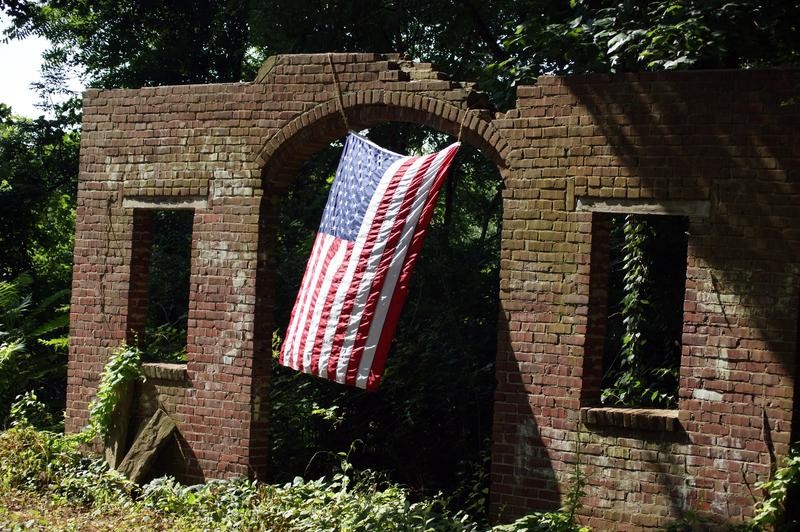
Gated entrance to Bethel.
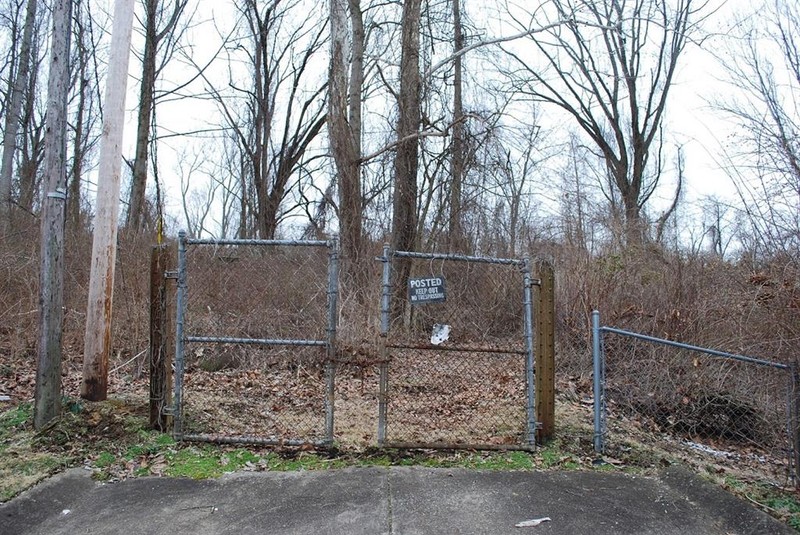
One of the cemetery's earliest headstones (John H. Ellis, 1884-1929)
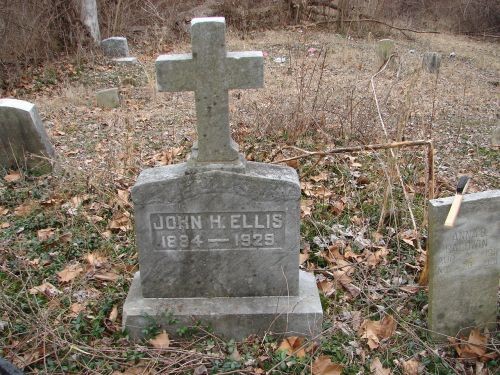
Headstone of five-year-old Vesta Marie Qualls (1928-1933)
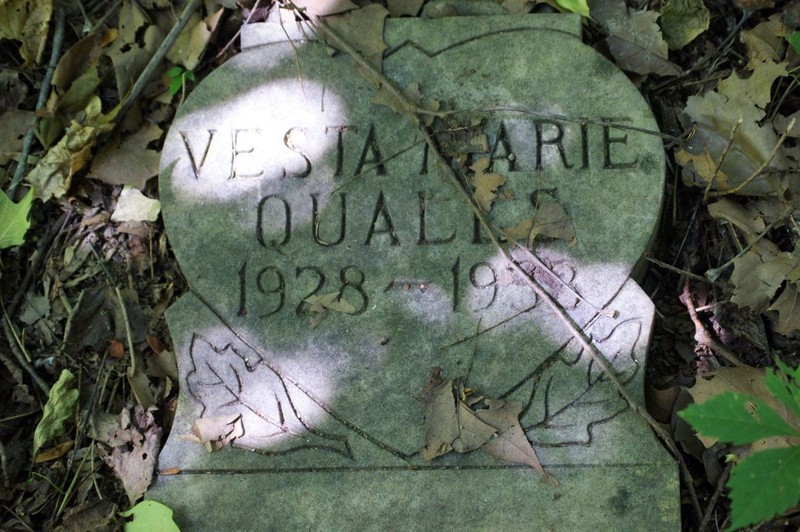
Shattered headstone of an unknown person (1879-1936)
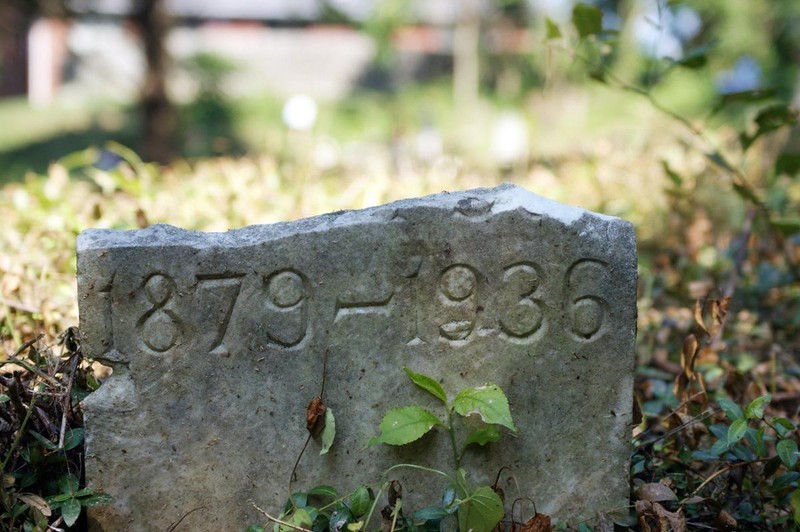
Hand-scratched headstone of Lillie E. Clark (1882-1965) found sunken in the earth during cleanup efforts in 2013
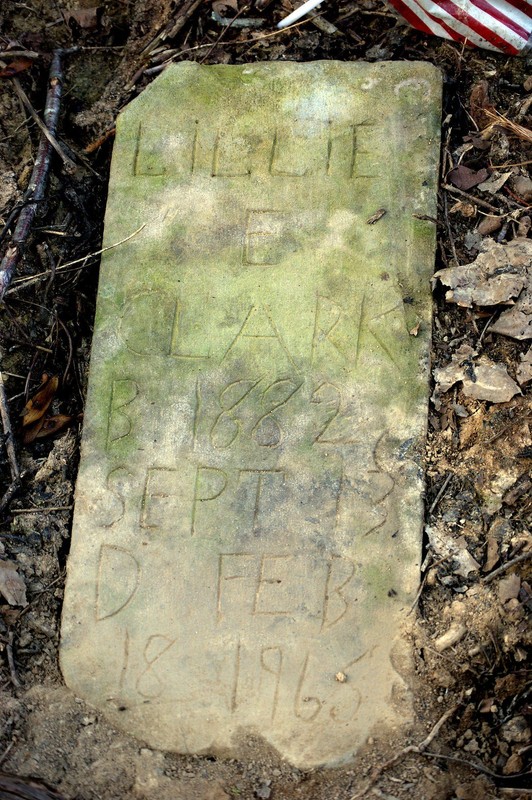
Headstone of Spanish-American War Veteran, William Booker, slumped over in the woods
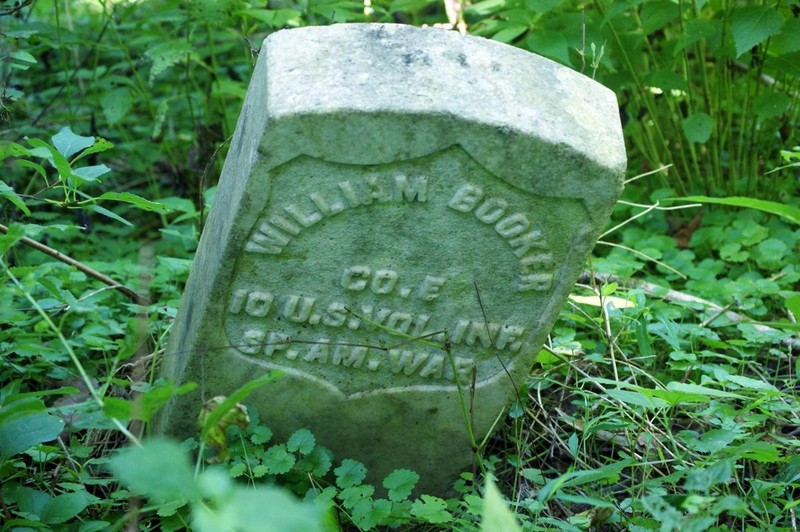
Huntington resident, Leigh Anne Shelton places flowers at the grave of WWI veteran Isaac Jones during cleanup efforts in 2013
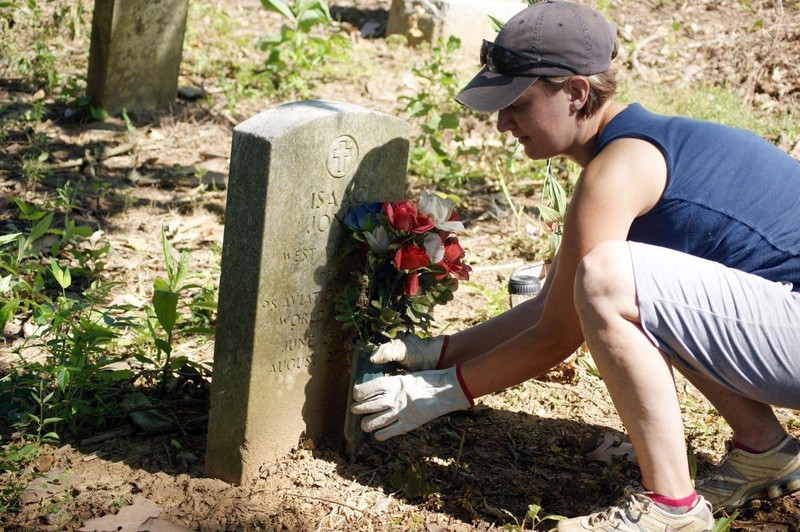
Backstory and Context
Text-to-speech Audio
Charles (C.) S. McClain was born in August 1865 in Roanoke, Virginia and received his education in Petersburg, Virginia. Mary E. Burke was born in Radford, Virginia in 1872. Charles S. McClain and Mary wedded in 1888 in Virginia and, by 1900, were living in Wayne County, West Virginia where Charles S. indicated his vocation as a farm hand in the federal census.
The McClain family moved to Huntington with Charles S. starting a barber shop. By 1895, Charles S. McClain was practicing embalming and the McClain Funeral Home was established in 1911. The funeral home included a chapel and a morgue and was located at 1644 Ninth Avenue directly across from Sixteenth Street Baptist Church. Other funeral homes associated with the African American community in Huntington included those started by Herman Bryant and A. J. Williams.
The McClain family acquired ownership of this land in 1935. Prior to this time, hundreds of interments had already occurred and the area had served as a cemetery for African Americans while the land was owned by several different owners prior to 1935. According to death certificates dated from 1927 through 1930, the cemetery was referred to as Kinston Memorial Park. From 1930 through 1934, death certificates indicate that the cemetery was known as Bethany Memorial Park. It appears that the cemetery was renamed Bethel Memorial Park in 1935. Alfred Johnson and Mary McClain, conveyed the tract to Mary McClain on April 11, 1942.
Situated on the cemetery tract one can still find the ruins of the caretaker’s cottage. Charles S. McClain signed many death certificates serving as undertaker for the funeral home. He died without a will in March 1951, leaving his wife, Mary, son (William A. McClain), and daughter Frances McClain Joyce to manage the funeral home and cemetery. After Mary McClain died without a will in June 1959, the daughter and son continued to operate the cemetery and funeral home.
A section of the cemetery property was obtained by eminent domain by the State Road Commission for the construction of Interstate 64 in 1962. A jury recommended a value for the property to be paid to the cemetery owners in 1965. A deed was discovered to have been recorded in 1959 in which Mary McClain had conveyed the eastern half of the cemetery, along with the caretaker’s cottage and other outbuildings, to daughter Frances McClain Joyce and her husband. This led family members to request an official probation of Mary McClain’s estate and to a number of lawsuits among family members and in the process, whatever funds might have been used to care for the cemetery were used for legal fees and/or simply disappeared from record.
The official records of the funeral home and cemetery have been lost over time and the precise number of interments is unknown. A 1990 accounting of the visible headstones conducted by Carrie Eldridge revealed slightly fewer than one hundred interments. The author of the 2014 article in the KYOWVA newsletter has determined at least 250 burials occurred in Bethel Memorial Park, including those indicated in the Kingston and Bethany Memorial Parks, possibly through the use of death certificates.
In 2012, a local effort was made to clean the overgrown vegetation from the cemetery. A newspaper article indicates that the cemetery’s last burial took place in 1974. Those leading the cleaning effort stated in the 2012 newspaper article that they had identified 41 headstones associated with veterans. Thanks to the local chapter of the Daughters of the American Revolution’s extensive research, the service records of sixty veterans buried at Bethel have been discovered.
In contrast to Bethel Memorial Park, Spring Hill Cemetery- located along Norway Avenue- was introduced in the early 1870s as the city’s official cemetery (although burials had been taking place since the 1830s). Spring Hill Cemetery drew an informal color line for many years before African Americans were allowed to use burial plots in sections to the south of the present-day office. There was also a section that was set aside for African American veterans. While the cemetery no longer practices racial segregation, it is important to note that local government has operated and provided maintenance to Spring Hill Cemetery and other cemeteries, a sharp contrast to Bethel which is often covered with weeds and litter despite the efforts of individuals and groups that lead formal and informal clean-up efforts.
Bethel Memorial Park’s historical significance lies in its silently demonstrable connection to realities of segregation, generational inequality for Black Americans, and its association with a formerly prominent Black business in Huntington.
(Access to the cemetery is limited by a chained gate at the southern end of Bethel Road. Access is currently limited to those with permission of the property owner.)
Sources
Lavender, Dave. Authors with local ties publish new books; festivals, events offer tales. Herald Dispatch. July 31, 2017. Accessed August 05, 2017. http://www.herald-dispatch.com/features_entertainment/authors-with-local-ties-publish-new-books-festivals-events-offer/article_44f2389f-97a0-5d09-b1d8-07f202cf2df2.html.
Griffith, Cassandra. Bethel Cemetery, Roots. June 1st 1999. Accessed November 17th 2019. http://sites.rootsweb.com/~wvcabell/cemetery/bethel.html.
The Herald-Dispatch. Gallery: Abandoned Graves Receive Needed Care, The Herald-Dispatch. July 20th 2013. Accessed November 17th 2019. https://www.herald-dispatch.com/multimedia/photo_galleries/photos_news/gallery-abandoned-graves-receive-needed-care/article_e18b39cb-88e5-5bec-86b5-f34e10d0fdb4.html.
http://cabellcountydoorstothepast.com/cemeteries/bethel/bethelcem.htm
https://www.herald-dispatch.com/multimedia/photo_galleries/photos_news/gallery-abandoned-graves-receive-needed-care/article_e18b39cb-88e5-5bec-86b5-f34e10d0fdb4.html
https://www.herald-dispatch.com/multimedia/photo_galleries/photos_news/gallery-abandoned-graves-receive-needed-care/article_e18b39cb-88e5-5bec-86b5-f34e10d0fdb4.html
https://www.herald-dispatch.com/multimedia/photo_galleries/photos_news/gallery-abandoned-graves-receive-needed-care/article_e18b39cb-88e5-5bec-86b5-f34e10d0fdb4.html
